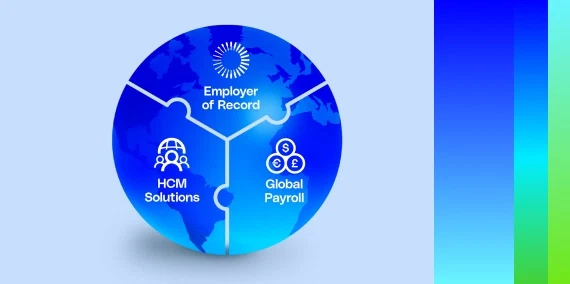Today, companies expanding globally are sourcing talent from around the world to achieve more sustainable growth. According to G-P’s 2023 Global Growth Report, nearly three-quarters (72%) of leaders are willing to hire talent from other countries, with 81% already actively engaged in global recruitment.
Global growth requires building and maintaining a skilled, engaged, and thriving workforce. Companies must proactively improve their talent acquisition and retention strategy in order to navigate new markets and leverage professional development programs that enrich their global workforce.
As part of Argyle’s “Talent Innovation Beyond Borders” webinar, Pooja Chugh, G-P’s Director of Talent Acquisition, explored the latest trends shaping talent acquisition and management. Let’s review some of the discussion’s key insights.
#1 Companies are emphasizing skills-based hiring over traditional qualifications.
In recruitment, the traditional focus on qualifications and experience is shifting towards a more dynamic approach centered on skills and potential. Chugh explained how organizations are moving away from prioritizing degrees and specific industry experience and instead focusing on how candidates can be nurtured and developed within the company.
This approach acknowledges that the ability to adapt and grow is more valuable in the long run than static credentials. With skills-based hiring, companies can widen the talent pool and align better with the dynamic nature of today’s job market, where the ability to perform in changing environments is more crucial than ever.
“The future of hiring lies in identifying those skill sets that will be critical for success in evolving job roles, and this means looking beyond the conventional resume to see the true potential of candidates,” Chugh noted. “Gone are the days when companies focused solely on qualifications. Now, the emphasis is on skills that directly enhance job performance, such as critical thinking, creativity, and emotional intelligence.”
#2 Employers are leveraging upskilling and continuous learning to further invest in their workforce.
Upskilling and continuous learning have become crucial for bridging skills gaps, maintaining a competitive edge, and preparing the workforce for future challenges. Chugh highlighted how companies are implementing training and development programs that enable employees to enhance and acquire new skills, noting that “companies need to invest in their employees’ development to stay relevant and competitive.”
By providing clear pathways for career progression, companies can improve job performance and boost engagement and retention, ensuring that employees remain agile and responsive to future challenges. This approach is particularly useful with the rise of artificial intelligence (AI) and other advanced technologies. “The companies which are really imbibing AI in their value chain are always going to be successful for tomorrow,” noted Chugh.
Companies are also leveraging strategies for continuous learning, such as offering in-house training programs, partnering with educational institutions for specialized courses, and providing access to online learning platforms like LinkedIn Learning. Chugh added, “It’s about creating a culture where learning is valued, and employees are encouraged to develop new skills continuously. This strategy boosts career progression and employee retention, as people are more likely to stay with a company that invests in their growth.”
#3 Diversity, equity, and inclusion (DEI) have become central to talent strategy.
DEI initiatives are no longer just buzzwords but integral components of a successful talent strategy. Diversity enriches company culture and drives innovation. Chugh also noted that organizations with diverse teams often outperform more homogeneous teams.
“DEI strategy is interlinked with the talent management strategy,” she shared. “It’s not just about hiring diverse talent but also how you are creating an inclusive work environment where everybody feels included and valued.”
Companies are adopting diverse hiring practices, unconscious bias training, and inclusive policies to create a more equitable workplace. Many are also focusing on connecting with underrepresented populations and ensuring inclusive daily operations and leadership development practices.
#4 Data-driven decision-making and AI have become game-changers in recruitment and talent management.
AI and data analytics are transforming HR practices, making talent management more efficient and effective. According to G-P’s AI at Work report, 81% of organizations have an established AI program, with 4 in 5 (84%) business leaders planning to invest more in AI over the next 12 months.
From screening candidates to predicting employee engagement and retention, data creates the foundation for valuable insights that can improve efficiency and effectiveness. “Data is not just about numbers; it’s about getting the story behind those numbers,” Chugh explained.
Chugh also highlighted how AI tools can automate candidate screening, predict job performance, and identify potential engagement issues, allowing HR professionals to make more informed decisions that align with their strategic goals. AI-powered sentiment analysis tools can help predict employee engagement levels and identify areas for improvement, enabling companies to tailor their strategies to boost morale and reduce turnover.
By leveraging data, companies can gain valuable insights into workforce trends and employee satisfaction, enabling them to implement more effective talent management strategies.
Data is not just about numbers; it's about getting the story behind those numbers.
Pooja Chugh
Director of Talent Acquisition at G-P
#5 Remote work environments are here to stay.
Remote and hybrid work environments have become the new standard. According to McKinsey & Company, 87% of U.S.-based workers offered some form of remote work have embraced the opportunity. “Companies are providing remote work opportunities,” Chugh noted, “and technologies are making sure that everybody feels inclusive and connected while we also reap the benefits of the remote working conditions.”
However, remote work has challenges, such as maintaining team cohesion and managing diverse time zones. Chugh shared practical solutions to address these challenges, like rotating meeting times and offering asynchronous communication tools.
Maintaining a productive remote work environment requires intentional efforts to foster engagement and inclusivity. “It’s crucial to leverage technology to keep remote teams connected and to create a culture where remote employees feel valued and included,” Chugh shared. This includes using collaboration tools, virtual team-building activities, and regular check-ins to ensure remote employees remain engaged and productive.
Attract and retain global talent with G-P.
Watch the full webinar on-demand or download the 2024 AI at Work report to dive deeper into G-P’s insights and learn how our global employment products and EOR solutions can help you succeed in today’s global marketplace. For more information on hiring and building global teams quickly and compliantly, contact us today or book a demo.











